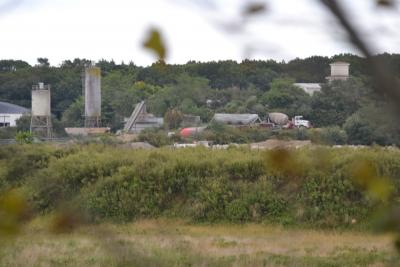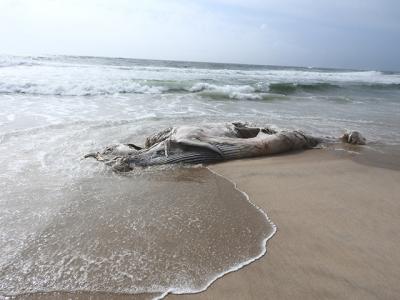Parking Plan Pushback
Parking Plan Pushback
In a scene reminiscent of a July 2015 meeting of the East Hampton Town Board, in which hundreds of Montauk residents aired their collective outrage at an out-of-control party atmosphere, supporters, and some opponents, packed the town hall meeting room last Thursday to comment on a proposed change to zoning code establishing parking requirements that could affect motels’ ability to add accessory uses such as restaurants, bars, or retail stores.
The public hearing pitted residents, many of whom live near motels believed to be planning expanded offerings, against business owners and their advocates. All professed to acknowledge an atmosphere of excess in the summer months; there was less agreement on how to balance residents’ rights and businesses’ ability to remain competitive, and thus the lifeblood of Montauk’s resort economy.
The zoning code now stipulates an additional on-site parking area equal to 50 percent of that required for an accessory use whenever such use is added, regardless of a site’s existing parking. “There are some instances where the planning board feels that the existing parking is not adequate for the existing use,” John Jilnicki, a senior assistant town attorney, told the board. “It certainly doesn’t meet the existing code.”
Many of Montauk’s motels predate zoning laws and enjoy a grandfathered nonconforming status. With an expectation that a motel’s restaurant or bar would draw patrons who are not guests of the business, Mr. Jilnicki said that, “To add additional parking equal to only half of that needed for the accessory use still creates a situation where there’s not sufficient parking on site.”
The amendment would set an establishment’s parking requirement for its principal use, as calculated by the current code and not its pre-existing nonconforming status, as a starting point. Adding an accessory use would compel the onsite addition of 50 percent of that use’s required parking as calculated by code, Mr. Jilnicki said. The requirement could be reduced, however, if the planning board determines a reduced need based on conditions it imposed or through mitigation offered by the property owner. Properties seeking to add an accessory use would be addressed on a case-by-case basis. “They have a lot of flexibility depending on each application,” he said of the planning board.
Also included in the proposed legislation is a statute limiting the area of an accessory use to one-third of the aggregate floor area.
Montauk residents at the meeting identified businesses including the Surf Lodge, Ruschmeyer’s, the Sloppy Tuna, the Montauk Beach House, the Atlantic Terrace, and Hero Beach Club (the latter two having recently changed hands and their new ownership apparently seeking to add a restaurant or bar) as problematic. Gert Murphy, who lives near the Atlantic Terrace, said that, “Some of us are beginning to feel we’re going to have to leave Montauk . . . because the quality of life has definitely been impinged by the club industry that has taken over some of our resort places.”
Pat Lukascewski of Seaview Avenue told the board that “We support the business community, but it needs to respect us,” and asked that the board “keep Montauk from becoming the amusement park of the East End.” Parking is already “more than tight” at Atlantic Terrace, she said. “I can’t imagine the chaos following any expansion, should this proposal fail.”
Cheryl Richer of Surfside Avenue said that, “The party scene has greatly diminished my enjoyment of my Montauk home.” She can avoid the Sloppy Tuna, she said, “but what I can’t avoid are the packs of loud, drunken [Atlantic Terrace] guests that walk past my bedroom at all hours of the evening. . . . I have to wear earplugs to sleep, and it doesn’t always work, and there are always beer cans, open containers of food, and garbage around my lawn every day.”
Some speakers said the proposed amendment does not go far enough. “I hope you do close the hearing . . . and take some action before another summer happens and more businesses try to create that self-contained resort thing, which isn’t really any good for Montauk,” said Ellen Cook. “The other restaurants are not doing all that swimmingly, and there’s tons of retail shops that would like to see more business,” she said. A volunteer emergency medical technician, she said that vehicle and pedestrian traffic around the Surf Lodge, which features scant on-site parking, presents a hazard for those going to and from the firehouse. “We are already kind of overrun with that kind of business,” she said. “What you’re proposing is really moderate.”
But Laraine Creegan, executive director of the Montauk Chamber of Commerce, complained that its 300-plus members were not even consulted in the drafting of the proposal. While “a safe and enjoyable atmosphere that respects the community” is important, she said, “today’s traveler is not satisfied with the barebones hotel experience of yesteryear.” For Montauk’s businesses to remain competitive, she said, “local hotel operators must have the ability to provide, among other things, basic food and beverage offerings and attractive retail space.” The proposed requirements are “much more draconian and basically impossible to overcome without a special dispensation waiver from the planning board.”
Larry Siedlick, an owner of the Montauk Beach House, said that the proposed amendment unfairly targets his and other resorts. A majority of his customers arrive in Montauk via public transportation, he said. “To blame the parking on hotels that are trying to stay competitive, I don’t think is reasonable,” he said. The proposed amendment “essentially will make it impossible for any motel to add any modern amenity, be it a bar, shop, spa, services, anything.” Absent “some reasonable accommodation” allowing the addition of modern amenities, the board is “dooming these properties to an outdated, 1970s, failing business model which basically results in the gradual deterioration of these properties” and eventual blight.
The town is not targeting businesses, said Councilwoman Sylvia Overby, the board’s liaison to the business committee. “This started because we had some problems brought to us by the Building Department in interpreting the code.” The amendment clarifies the code and addresses questions posed by code enforcement officers, the fire marshal, and the Planning Department, she said.
The hearing was closed, but Ms. Overby asked, and the board agreed, that the written record be kept open until Nov. 1.








